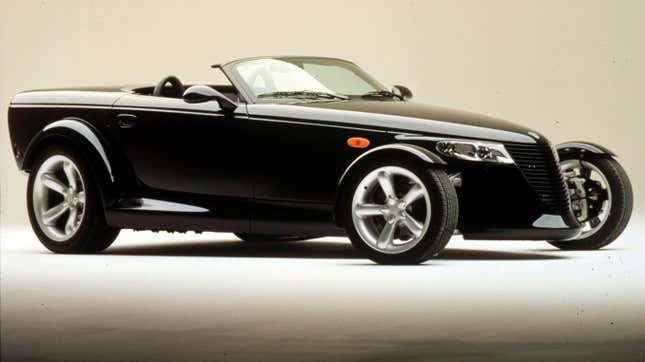
What if the Plymouth Prowler actually had some muscle and useability to go with those looks? That was the Chrysler Howler. It had things that could’ve made the Prowler a hit, but it came too late. But, before you look at what the Howler got right, you have to examine what the Prowler got wrong.
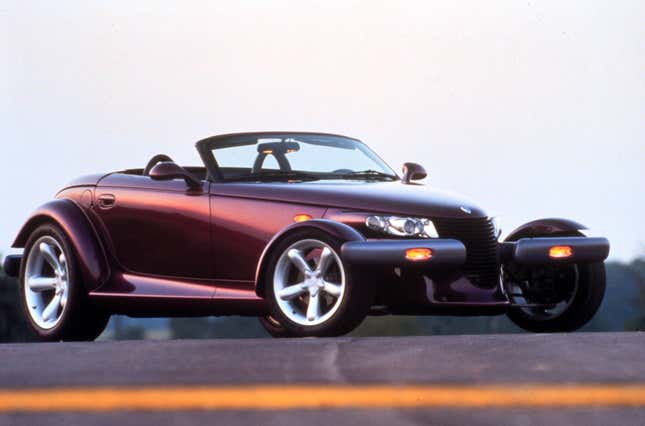
The Plymouth Prowler was a stunner when it debuted in 1997, with hot rod looks straight from the factory. With a design penned by Chrysler design head Tom Gale (who designed the LH cars, the Viper, and the 300/Magnum among others), it certainly looked the part. But hot rod looks is all it was. While the design gave tire shredding hot rod, the drivetrain gave mid 90’s family sedan.
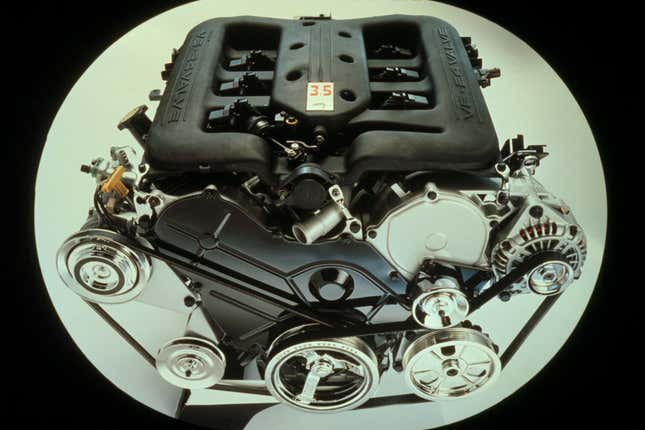
Early Prowlers were powered by Chrysler’s 3.5-liter V6. Borrowed from the LH cars, it produced 214 horsepower and was paired with Chrysler’s four-speed automatic with Autostick. Even though it had a lightweight aluminum body and only weighed 2,862 lbs, 214 hp didn’t do enough for it. Sixty came in seven seconds with the quarter-mile coming in nearly 16 seconds.
By 1999 the 3.5-liter V6 had been massaged to 250 hp. That cut the 0 to 60 time to just under six seconds. But it still wasn’t blowing anyone away. Combine that with an impractical trunk that was just 1.8 cubic feet and no manual transmission and many would be buyers passed it up. The optional trailer didn’t help things. While it looked cool, but who wanted to tow with a hot rod?
It didn’t have to be that way though. Enter the Chrysler Howler. (Plymouth was discontinued in 2001 and every Plymouth branded model became a Chrysler at that point.)
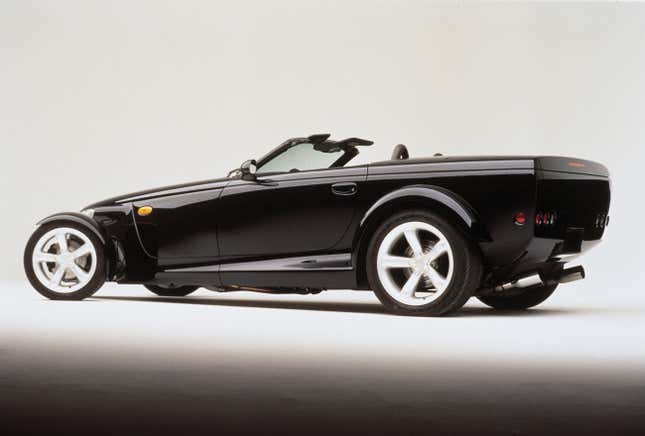
The Howler owes its existence to two separate projects at Chrysler that had nothing to do with each other. From ConceptCarz.com:
Howler is the result of two internal projects. In DaimlerChrysler’s Advanced Packaging studio, designer Christopher Schuttera, who graduated just two years ago from the Úniversity of Cincinnati, created his vision based on a modern version of classic forms incorporating a pickup bed into the clean, pure Prowler design.
At the same time, Jon Rundels, Concept and Specialty Vehicle Executive, was looking for ways to meld the Prowler platform with the all-new Jeep® PowerTech V-8 engine and a Borg-Warner T5 manual transmission.
The result was improvements in performance and packaging that made the Prowler into the car it should have been from the start. I reached out to the designer of the Howler’s trunk space Christopher Schuttera for more info on the car. He gave me some interesting information on the design including that the car was a leftover pre-production mule:
A designer by the name of Cliff Wilkins was the genesis behind it, he did the original idea sketch. It was kind of a Prowler meets T-bucket kind of thing. The project got put into the studio I was in, Advanced Packing, as it was the one responsible for the Prowler production car. I was lucky to be given the task to develop the idea in full size. We basically modeled the new back end on to a preproduction mule. Fun fact, we had to put solid bars in place of the rear shocks on that mule because automotive modeling clay is heavy.
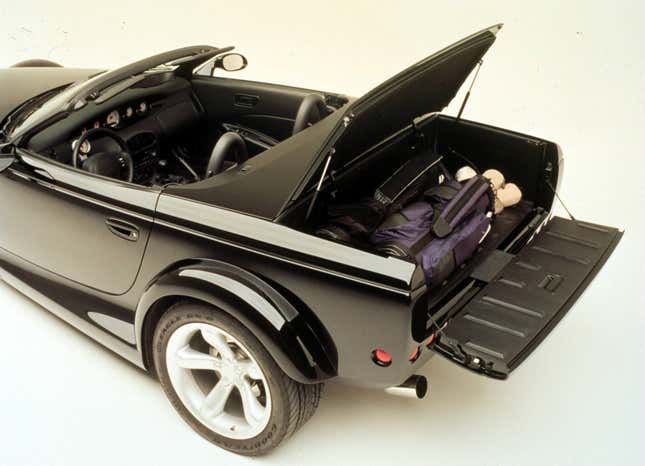
He also pointed out that one of the intentions of the Howler was to give it more usability. Chrysler also toyed with various V8’s before settling on the 4.7:
And, yeah, one of the intentions was to give it some actual trunk space. The transaxle set up really robbed any and all room in the original car. How much is a figure I’m not sure of, though the requirement was to get two golf bags in it, because of course it was. The other intent was to study dropping the then new 4.7 liter V8 and a 5 speed manual into the chassis. The 4.7 was the only V8 that would fit easily, the older 5.2 and 5.9 were too wide. It was a fun project to work on for sure. We tried a few more “truck like” executions on the bed, but the body really wanted the more integrated version in the end.
Schuttera also mentions that reshaping the trunk of the production car was being looked at:
Ironically, the 4.7 and the manual trans paired with a traditional rear diff in the back, so the bulky transaxle was gone and we could’ve looked at reshaping the inner trunk of the original car instead. But, obviously, that wouldn’t have had the same level of visual impact when it was shown at SEMA. It’s a damn shame none of it went anywhere because with the 4.7 in it, the car finally had the sound and extra bit of grunt it needed.
It wasn’t to be, as the Prowler was discontinued in 2002. Still, it’s cool to look back at what could’ve been a great American hot rod, backed by a factory warranty.